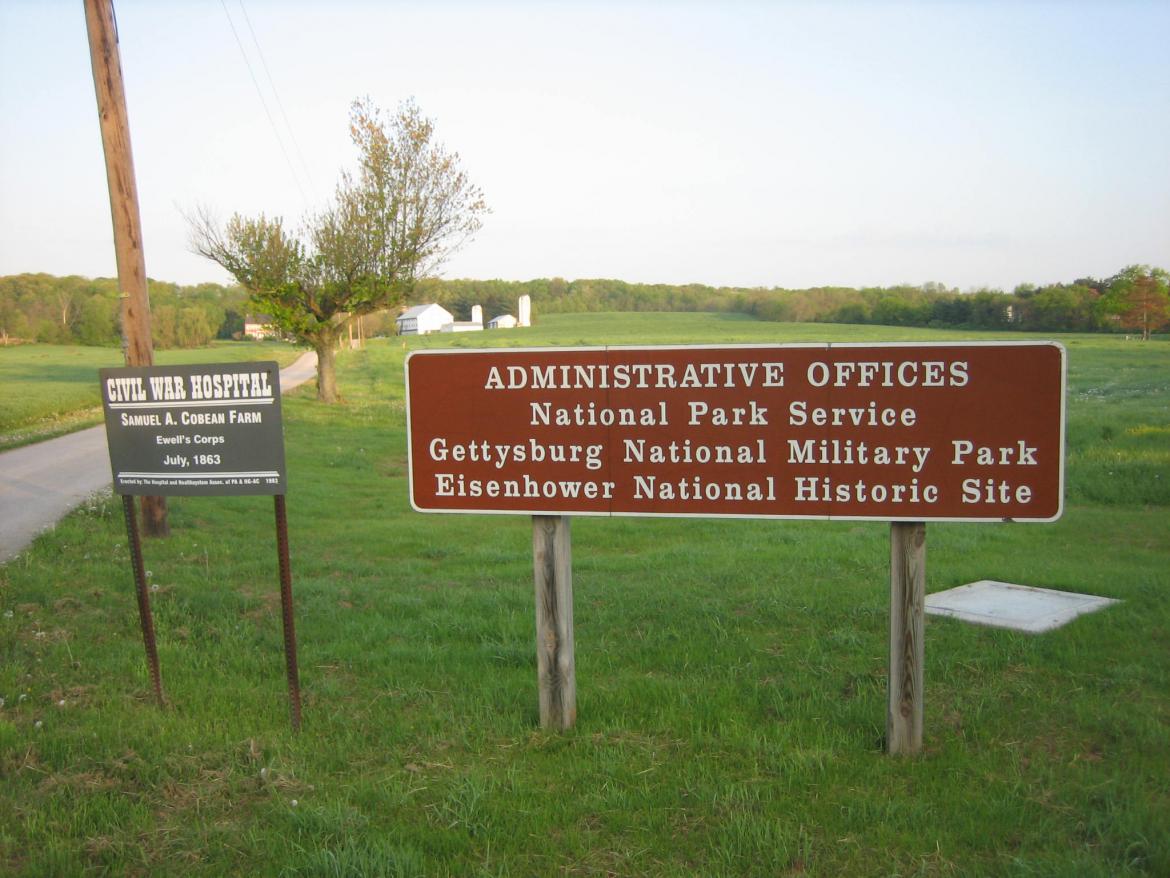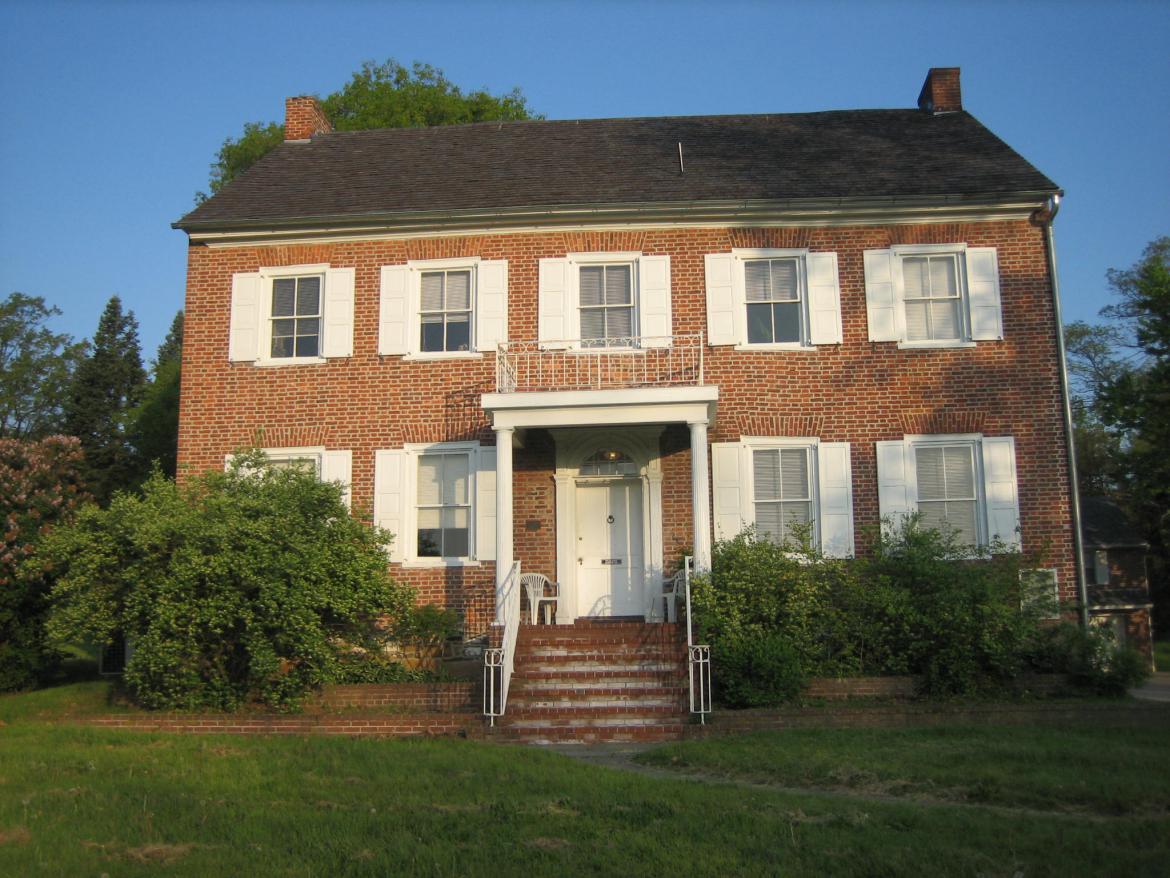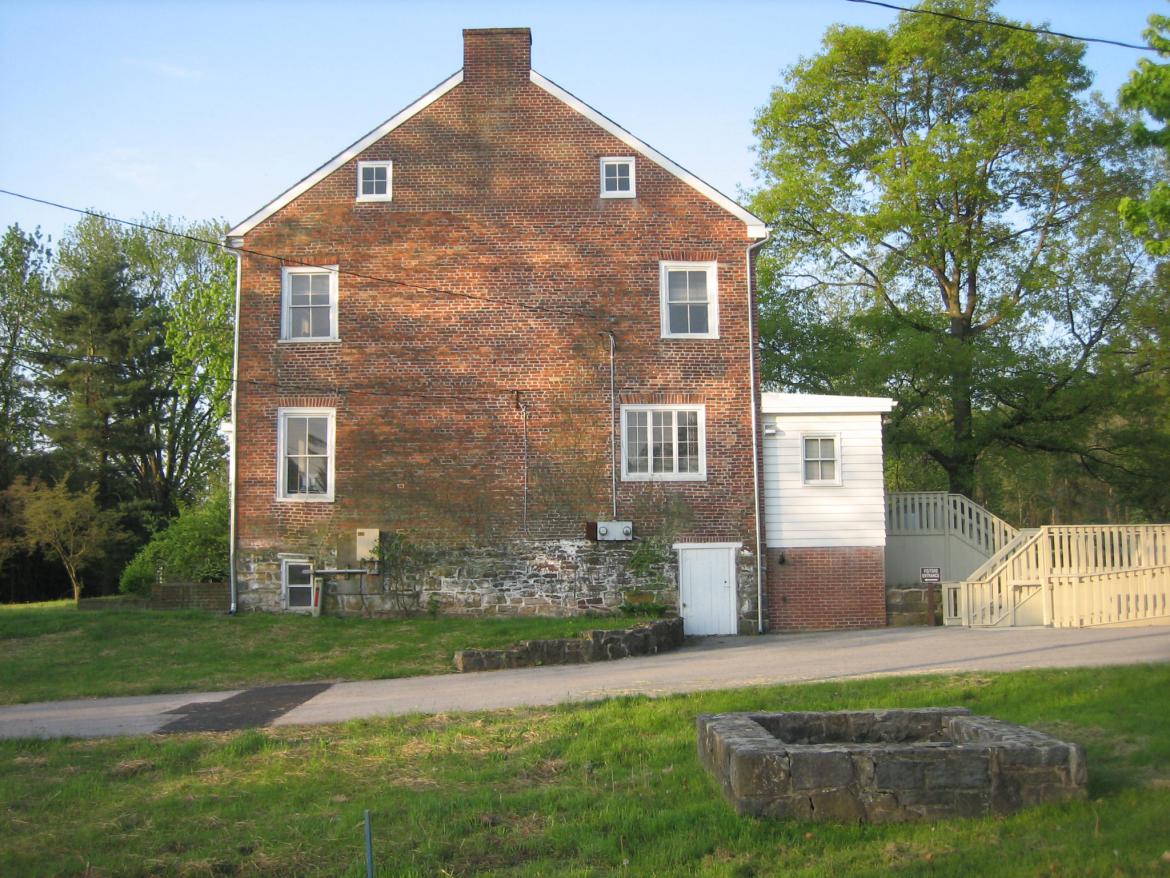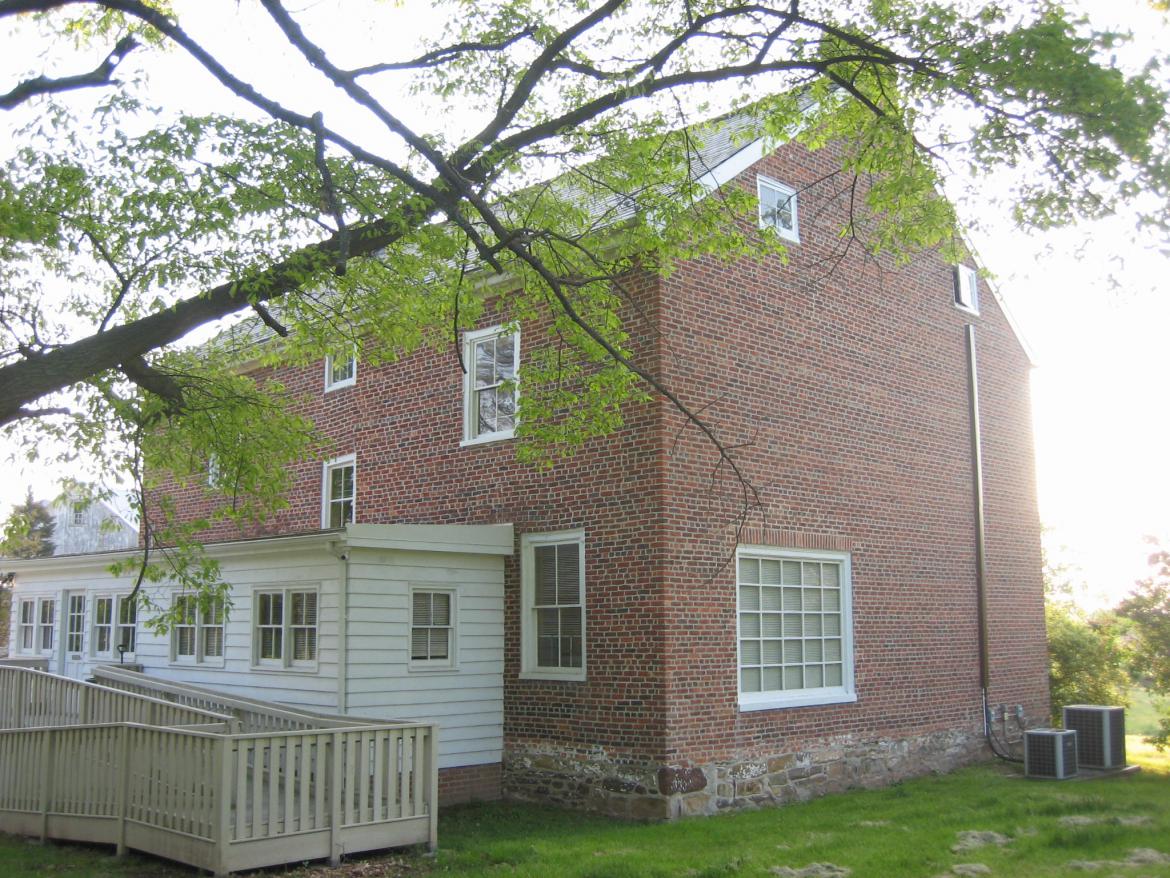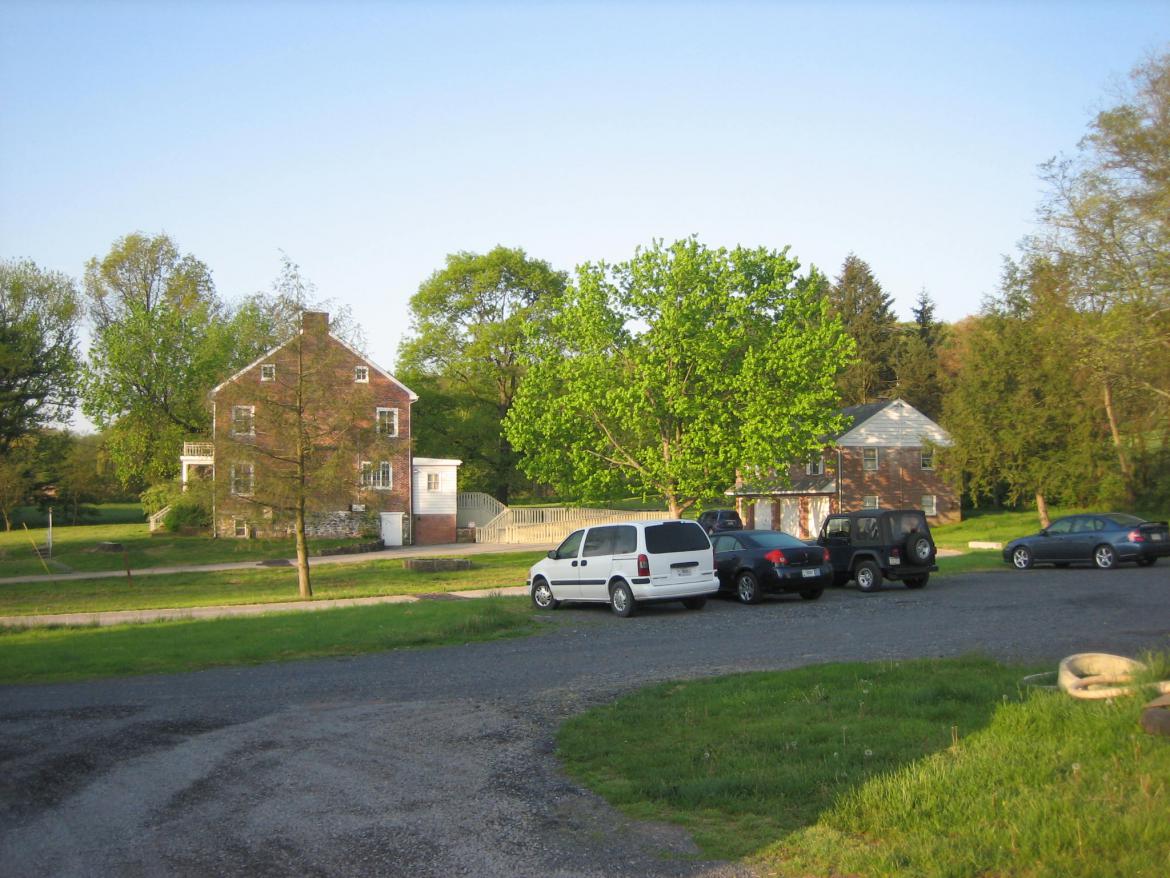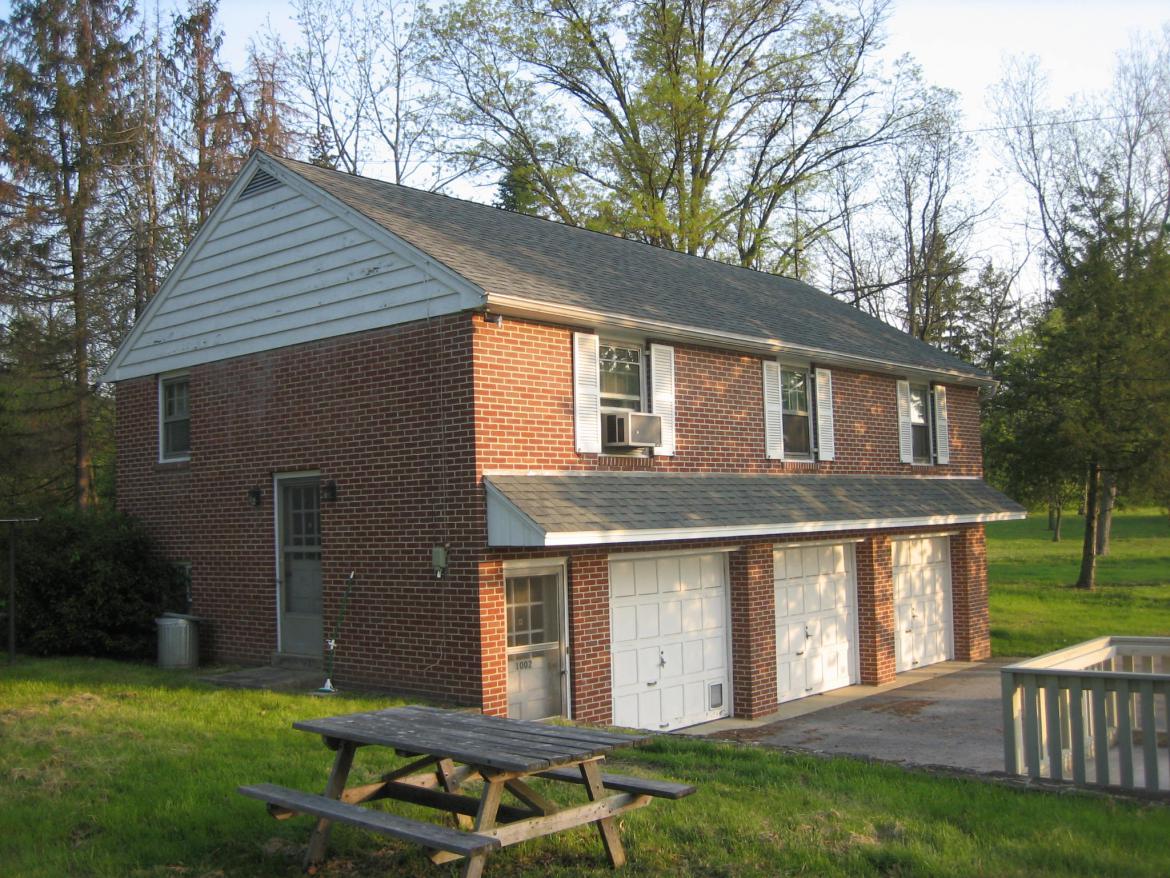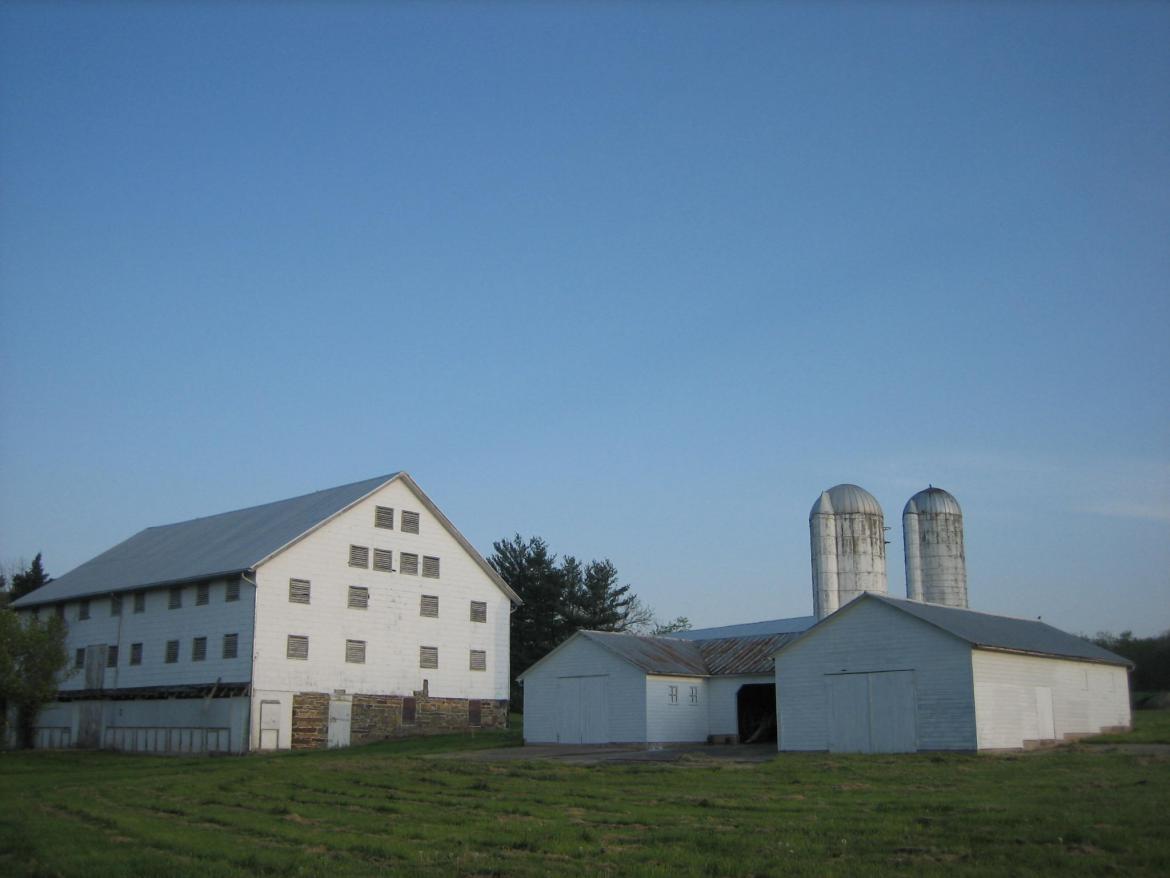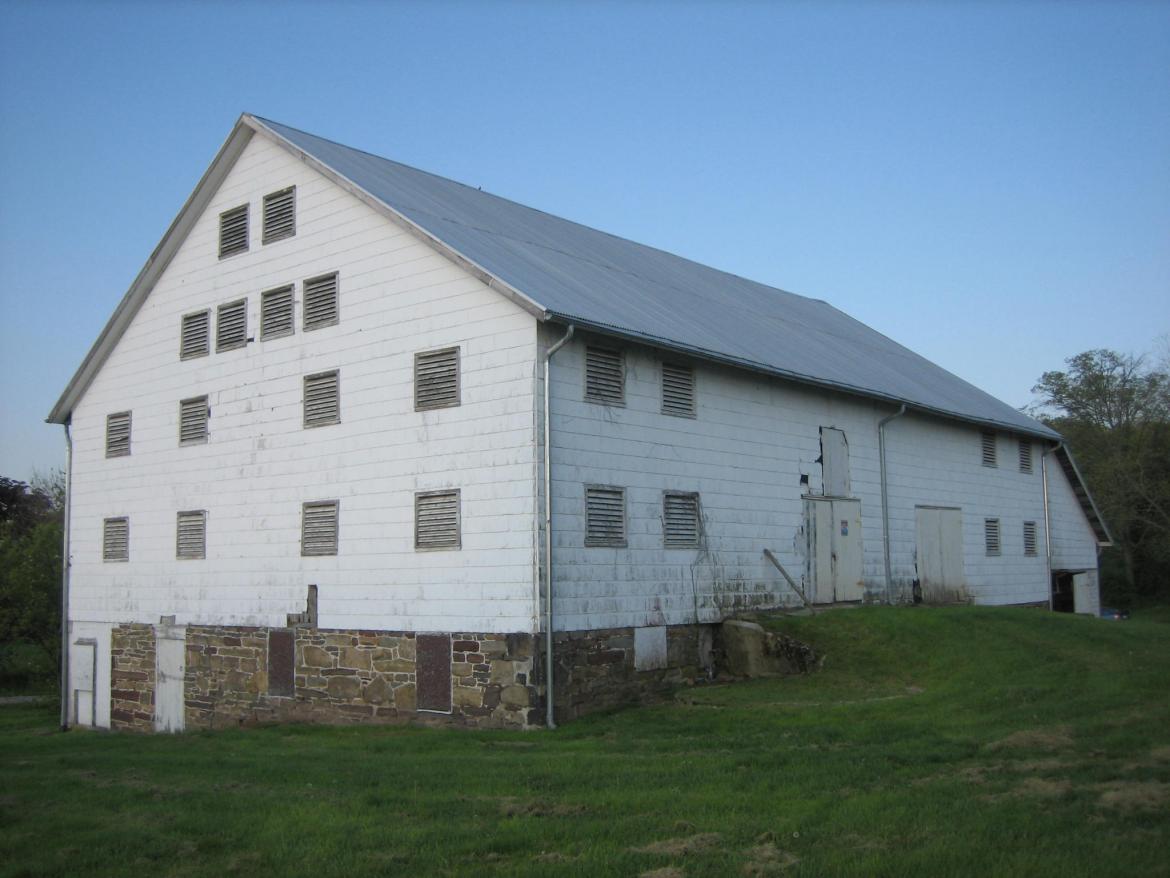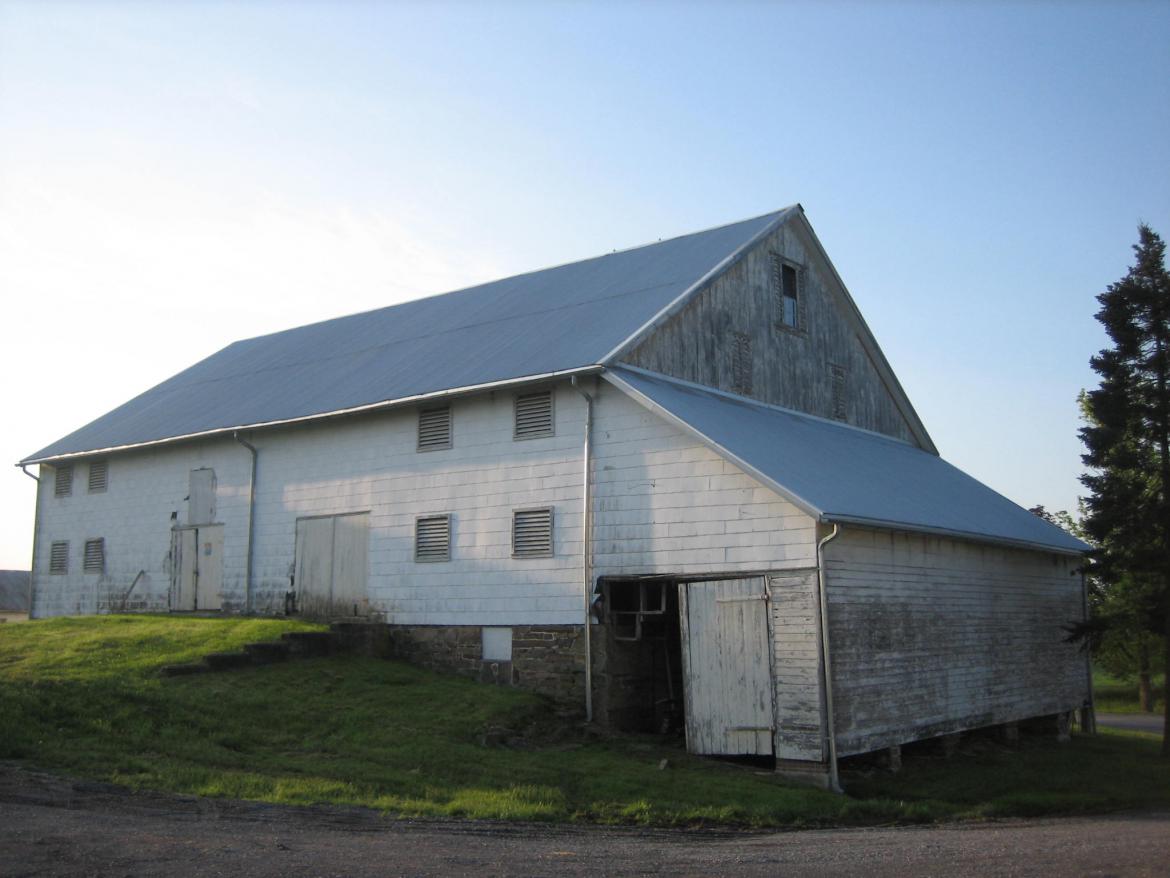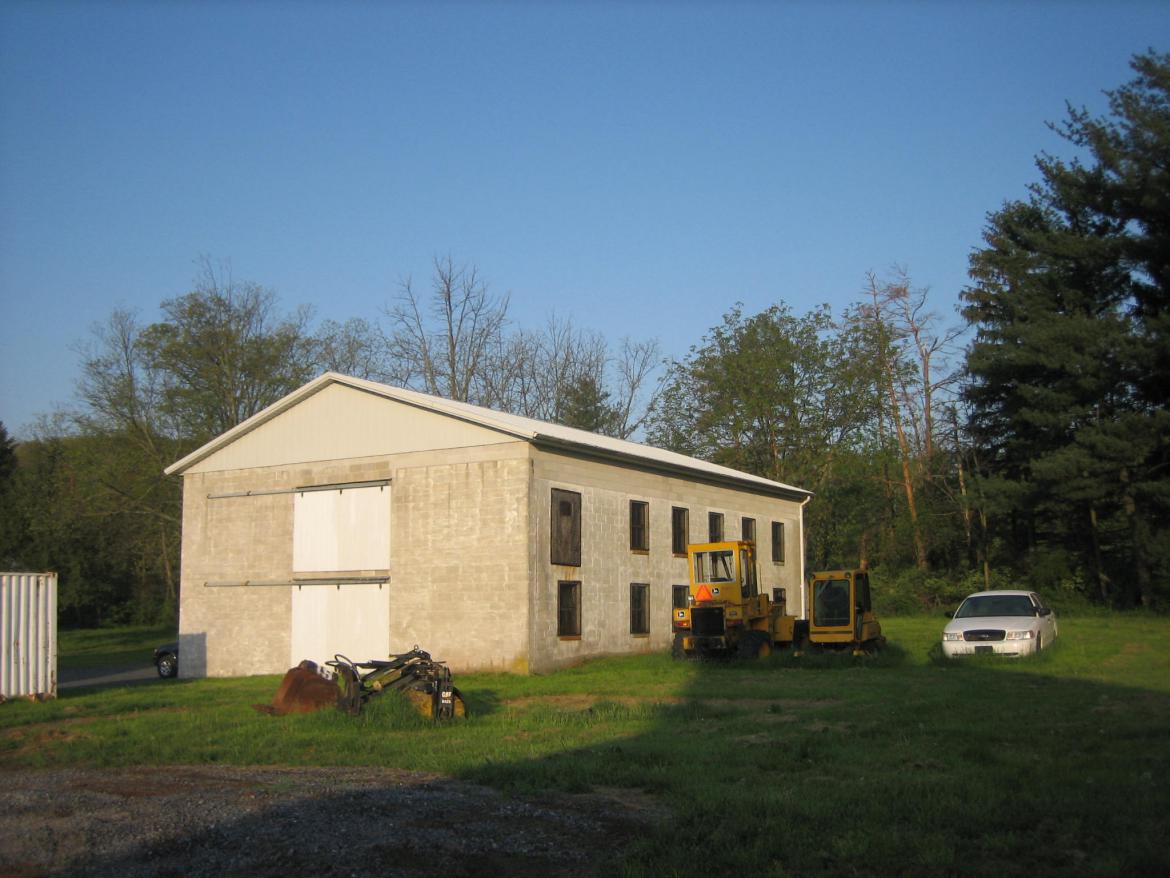The Cobean Farm is located in Cumberland Township, Adams County, Pennsylvania on the Carlisle Road near the intersection of Apple Avenue. As you can tell, its sits well away from the Carlisle Road (Pennsylvania State Route 34) where this photograph was taken. This view was taken from the east facing west at approximately 7:00 AM on Tuesday, May 6, 2008.
The Administration Offices for Gettysburg National Military Park moved to the Samuel Cobean farm in the late 1990s. Previously they were located in the former Superintendent’s Lodge in the National Cemetery near the Baltimore Pike. The lack of space in the Superintendent’s Lodge necessitated the move to the Cobean Farm. The farm contains the main house, a barn, and four other, more modern, outbuildings. The Gettysburg Daily chose to visit the farm in the morning to take advantage of the sun hitting the east side of the main structures.
The 1860 census shows that Samuel Cobean (1804-1871) owned real estate valued at $8800, and personal estate valued at $2500. Total wealth of $11,300 made him the 11th wealthiest person in Cumberland Township. The wealthiest person was Francis Bream who owned the Black Horse Tavern on the Fairfield-Millerstown-Hagerstown Road. This view was taken from the east facing west at approximately 7:00 AM on Tuesday, May 6, 2008.
Samuel Cobean was born on July 31, 1804 and died on January 20, 1871. The 1860 census shows that he lived in structure with Elizabeth Cobean (1820-), born in Pennsylvania; James H. Cobean (1836-), born in Pennsylvania; Robert Cobean (1843-), born in Pennsylvania; Elizabeth Smith (1840-), born in Pennsylvania; Alexander Cobean (1817-), born in Pennsylvania; Susannah Cobean (1820-), born in Ohio; Martha E. Cobean (1858-), born in Ohio. This view was taken from the east facing west at approximately 7:00 AM on Tuesday, May 6, 2008.
The north side of the building. There is a stone walled in spring at the bottom left of the photograph. This “large” spring was used not only for hospital purposes, but for at least one Gettysburg civilian, J.F. McKentrick to help the wounded from the fighting on July 1, 1863. On July 2nd, McKentrick took dozens of canteens, filled them up at the spring, went back to the fighting along Oak Ridge and Seminary Ridge from July 1st, and gave the water to “hundreds” of wounded soldiers. This view was taken from the north facing south at approximately 7:00 AM on Tuesday, May 6, 2008.
The rear of the Cobean House. After the battle the Cobean Farm was used as a hospital by Ewell’s Corps of the Army of Northern Virginia. This view was taken from the west facing east at approximately 7:00 AM on Tuesday, May 6, 2008.
The west and south sides of the Cobean House. Confederate Major-General Isaac Trimble, who was wounded in Pickett’s Charge on July 3, 1863, was brought to the Cobean farm where his leg was amputated. This view was taken from the southwest facing northeast at approximately 7:00 AM on Tuesday, May 6, 2008.
The employee parking lot is in the foreground. The Cobean House is in the left background, and a more modern structure is in the right background. This view was taken from the north facing south at approximately 7:00 AM on Tuesday, May 6, 2008.
A closer picture of the more modern outbuilding behind the Cobean House. This view was taken from the southeast facing northwest at approximately 7:00 AM on Tuesday, May 6, 2008.
The Cobean Barn on the left, and more modern outbuildings on the right. This view was taken from the southeast facing northwest at approximately 7:00 AM on Tuesday, May 6, 2008.
A closer view of the outbuilding on the right in the previous photograph shows cannon carriages inside the structure. This view was taken from the south facing north at approximately 7:00 AM on Tuesday, May 6, 2008.
The Cobean Barn. The house and barn were said to be crowded with wounded, and a Confederate hospital flag flew above the structures. This view was taken from the northeast facing southwest at approximately 7:00 AM on Tuesday, May 6, 2008.
Prior to Pickett’s Charge on July 3, 1863, Confederate artillery prepared to fire from Seminary Ridge or Oak Ridge in the area of the Cobean Farm toward Cemetery Hill. The Union artillery returned fire, and a significant amount of their overshots landed in the Cobean Farm. A few of the shells struck the house and barn, killing some of the wounded. This view was taken from the northwest facing southeast at approximately 7:00 AM on Tuesday, May 6, 2008.
Structures north of the barn. The gray building material in the foreground are the stones used on the railroad cut bridge (Reynolds’ Avenue Bridge) construction. This view was taken from the southeast facing northwest at approximately 7:00 AM on Tuesday, May 6, 2008.
One of the more modern outbuildings that sits west of the barn. This view was taken from the northeast facing southwest at approximately 7:00 AM on Tuesday, May 6, 2008.
Another view of the modern outbuilding located west of the barn. This view was taken from the south facing north at approximately 7:00 AM on Tuesday, May 6, 2008.
During the fighting on July 1, 1863, as Ewell’s Corps became engaged, the Jeff Davis (Alabama) Artillery, under the command of Captain William Reese, brought his four three inch rifles to a field of wheat on high ground south of the Cobean buildings. They opened on 11th Corps troops 1500 yards south of their position along present-day Howard Avenue. The area where Reese had his guns is probably the brown area to the left of the Cobean House. This view was taken from the north facing south at approximately 7:00 AM on Tuesday, May 6, 2008.

